#black & white heniochus butterfly fish
Explore tagged Tumblr posts
Text
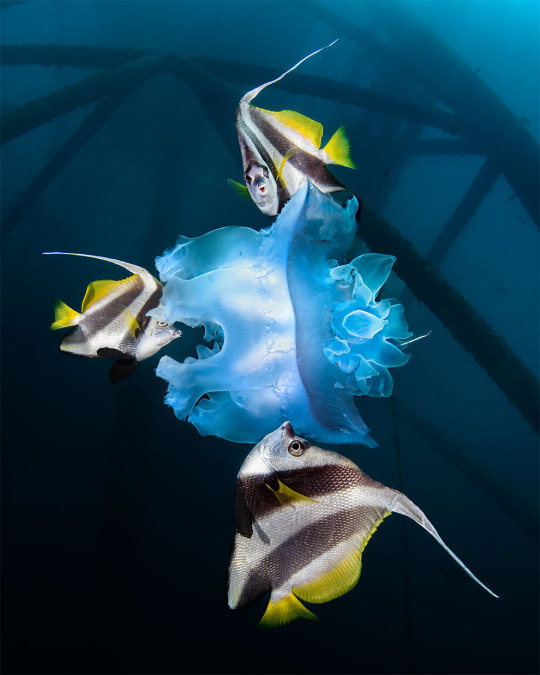
Kuwait, 2022.
This photo was taken at the remote oil rigs site in Kuwaiti waters, east of Qaruh Island. The inactive oil rigs have come to represent an important artificial reef in Kuwait, attracting divers and fishers alike.
Photo by Suliman Alatiqi
The Prince Albert II Of Monaco Foundation Environmental Photographer Of The Year 2023
Environmental Photography Award
#suliman alatiqi#photographer#environmental photography award#kuwait#qaruh island#artificial reef#reef#nature#black & white heniochus butterfly fish#fish#jellyfish
382 notes
·
View notes
Text
Manila Ocean Park
Freshwater Organisms
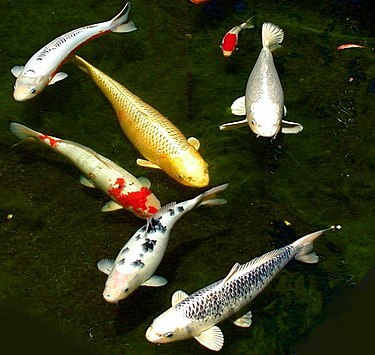
Koi
Colored varieties of Amur carp (Cyprinus rubrofuscus) that are kept for decorative purposes in outdoor koi ponds or water gardens.
Koi is an informal group of the colored variants of C. carpio. Several varieties are recognized by the Japanese. Koi varieties are distinguished by coloration, patterning, and scalation. Some of the major colors are white, black, red, orange, yellow, blue, and cream. The most popular category of koi is the Gosanke, which is made up of the Kohaku, Taisho Sanshoku, and Showa Sanshoku varieties.
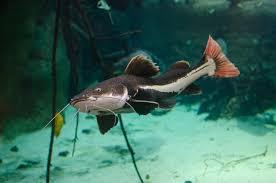
Catfish
A diverse group of ray-finned fish. Named for their prominent barbels, which resemble a cat's whiskers, catfish range in size and behavior from the three largest species alive, the Mekong giant catfish from Southeast Asia, the wels catfish of Eurasia and the piraíba of South America, to detritivores(species that eat dead material on the bottom), and even to a tiny parasitic species commonly called the candiru, Vandellia cirrhosa. There are armour-plated types and there are also naked types, neither having scales.

Danio rerio
A freshwater fish belonging to the minnow family (Cyprinidae) of the order Cypriniformes.Native to the Himalayan region, it is a popular aquarium fish, frequently sold under the trade name zebra danio (and thus often called a "tropical fish" although not native to the tropics). The zebrafish is also an important and widely used vertebratemodel organism in scientific research, for example in drug development, in particular pre-clinical development. It is also notable for its regenerative abilities, and has been modified by researchers to produce many transgenic strains.

Freshwater Angelfish
A small genus of freshwater fish from the family Cichlidae known to most aquarists as angelfish. All Pterophyllum species originate from the Amazon Basin, Orinoco Basin and various rivers in the Guiana Shield in tropical South America. The three species of Pterophyllum are unusually shaped for cichlids being greatly laterally compressed, with round bodies and elongated triangular dorsal and anal fins. This body shape allows them to hide among roots and plants, often on a vertical surface. Naturally occurring angelfish are frequently striped longitudinally, colouration which provides additional camouflage. Angelfish are ambush predators and prey on small fish and macroinvertebrates. All Pterophyllum species form monogamous pairs. Eggs are generally laid on a submerged log or a flattened leaf. As is the case for other cichlids, brood care is highly developed.

Red-Tailed Tinfoil Barb
The tinfoil barb (Barbonymus schwanenfeldii) is a tropical Southeast Asian freshwater fish of the family Cyprinidae. It is distinguishable from other species of the genus in having a red dorsal fin with a black blotch at the tip, red pectoral, pelvic and anal fins, red caudal fin with white margin and a black submarginal stripe along each lobe, and 8 scale rows between dorsal-fin origin and lateral line. Large individuals are silvery or golden yellow while alive with its dorsal fin red and caudal fin orange or blood-red. It grows up to 14 inches (35 cm) in length. Tinfoil barbs have a lifespan of 8 to 10 years.

Indo-Pacific Tarpon
In appearance, it is like the Atlantic tarpon, Megalops atlanticus: olive-green on top, and silver on the sides. The large mouth is turned upwards; the lower jaw contains an elongated, bony plate. The last ray of the dorsal fin is much longer than the others, reaching nearly to the tail. It is capable of filling its swim bladder with air and absorbing oxygen from it. Those living in fresh water tend to be smaller than the ones living in saltwater, growing just over 50 cm (20 in), while saltwater examples grow over 1 m (3.3 ft). They live upwards of 44 years and mature within two. They complete their metamorphosis from their larval stage in ten days.

Clown Knifefish
Anocturnal tropical fish with a long, knife-like body. This knifefish is native to freshwater habitats in Cambodia, Laos, Thailand and Vietnam, but it has also been introducedto regions outside its native range. It is one of world's most invasive species.
It is often seen in aquaculture and the aquarium trade where frequently confused with Chitala chitala; the latter species is very rare in the aquarium trade.Despite its popularity, the clown featherback reaches 1 m (3.3 ft) in length, outgrowing all but the largest aquaria.

Giant Gourami
A species of large gourami native to freshwater habitats in Southeast Asia, with its occurrence in other locations due to introductions. This species is commercially important as a food fish and is also farmed. It can also be found in the aquarium trade.The species has been used for weed control, also on highly invasive aquatic plants like Salvinia molesta, as the giant gourami can be a voracious herbivore.

Black and Red-Bellied Pacu
Pacu is a common name used to refer to several species of omnivorous South Americanfreshwater serrasalmid fish that are related to the piranha. Pacu and piranha do not have similar teeth, the main difference being jaw alignment; piranha have pointed, razor-sharp teeth in a pronounced underbite, whereas pacu have squarer, straighter teeth, which are uncannily similar to human teeth, and a less severe underbite, or a slight overbite. Pacu, unlike piranha, mainly feed on plant material and not flesh or scales. Additionally, the pacu can reach much larger sizes than piranha, at up to 1.08 m (3.5 ft) in total length and 40 kg (88 lb) in weight.

Alligator Gar
A ray-finned euryhaline fish related to the bowfin in the infraclass Holostei/hoʊˈlɒstiaɪ/. It is the largest species in the gar family, and among the largest freshwater fishes in North America. The fossil record traces its existence back to the Early Cretaceous over a hundred million years ago. Gars are often referred to as "primitive fishes", or "living fossils" because they have retained some morphological characteristics of their earliest ancestors, such as a spiral valve intestine which is also common to the digestive system of sharks, and the ability to breathe both air and water. Their common name was derived from their resemblance to the American alligator, particularly their broad snout and long, sharp teeth. Anecdotal evidence in several scientific reports suggest that an alligator gar can grow up to 10 ft (3.0 m) in length.
Marine Organisms

Moorish Idol
A marine fish species, the sole extant representative of the family Zanclidae in order Perciformes. A common inhabitant of tropical to subtropical reefs and lagoons, the Moorish idol is notable for its wide distribution throughout the Indo-Pacific. A number of butterflyfishes (genus Heniochus) closely resemble the Moorish idol. It is closely related to, if not a direct descendant of, the extinct Eozanclus brevirostris, from the Middle Eocene of Monte Bolca.

Blue Tang
Paracanthurus hepatus has a royal blue body, yellow tail, and black "palette" design. The lower body is yellow in the west-central Indian Ocean. It grows to 30 cm (12 in). Adults typically weigh around 600 g (21 oz) and males are generally larger than females. This fish is rather flat, like a pancake, with a circular body shape, a pointed snout-like nose, and small scales. The blue tang has nine dorsal spines, 26–28 dorsal soft rays, three anal spines, and 24–26 anal soft yellow rays.
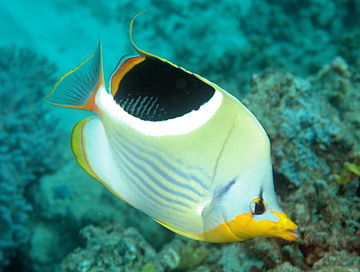
Butterfly Fish
The butterfly fish is a generally small-sized species of marine fish, found in tropical and subtropical waters, primarily around coral reefs. The butterfly fish is well known for its brightly coloured body and elaborate markings.
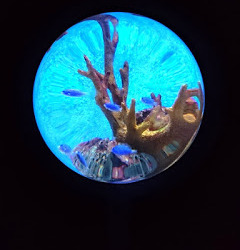
Blue Damsel Fish
Chrysiptera parasema, also known as yellowtail damselfish, yellowtail blue damsel, goldtail demoiselle, and other variations, is a popular saltwater aquarium fish from the Indo-Pacific.
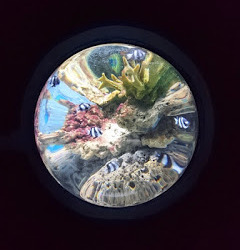
Banded Humbug
Dascyllus aruanus, known commonly as the whitetail dascyllus or humbug damselfish among other vernacular names, is a species of marine fish in the family Pomacentridae. Banded humbugs are common inhabitants of shallow coral reefs.
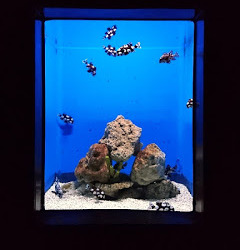
Harlequin Sweetlips
Plectorhinchus chaetodonoides, the harlequin sweetlips, is a species of grunt native to the Indian Ocean and the western Pacific Ocean. It is a denizen of coral reefs found at depths of from 1 to 30 m. It can reach 72 cm in TL. The heaviest known individual weighed 7 kg.
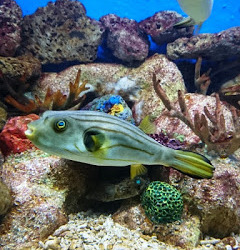
Manila Pufferfish
Found singly over mud, sand, seagrass beds and silty areas of sheltered estuaries, shallow lagoons, seaward reefs and estuaries. The bodies of Pufferfish are covered in a toxic mucus, if the skin or flesh is consumed it can be fatal to humans. When threatened they will puff up like a football to deter predators.
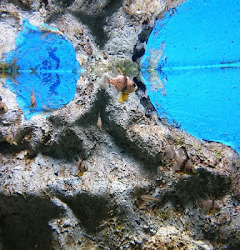
Pajama Cardinal Fish
The pajama cardinalfish, spotted cardinalfish, coral cardinalfish, or polkadot cardinalfish is a species of fish belonging to the family Apogonidae. It is a popular aquarium fish. The Pajama Cardinalfish is a rainbow of playful colors. It has a greenish-yellow face, bright orange eyes, and a silver-based body.

Clown Fish
Clownfish or anemonefish are fishes from the subfamily Amphiprioninae in the family Pomacentridae. Thirty species are recognized: one in the genus Premnas, while the remaining are in the genus Amphiprion. In the wild, they all form symbiotic mutualisms with sea anemones.
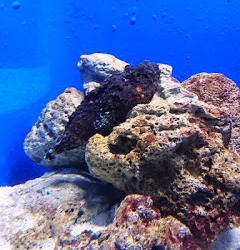
Venomous Stonefish
Synanceia is a genus of fish of the family Synanceiidae, the stonefishes, whose members are dangerously venomous and even fatal to humans. It is one of the most venomous fish known. They are found in the coastal regions of the Indo-Pacific.
1 note
·
View note
Photo

Black & white heniochus butterfly fish – Heniochus diphreutes
#vectorillustration#fish#natureillustration#gradient#inthesea#graphic design#heniochus#blackandwhiteheniochus#zsofia szabo
4 notes
·
View notes